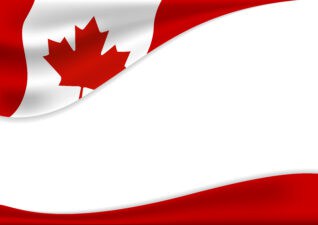Being in your 30s is a new phase of life. You are likely done with college, growing your career, starting a family, and buying a house. You have a whole world around you and several loans and expenditures. There are student loans, mortgages, child expenses, and household budgets. Amid these fixed costs, you also need some money to live your life — you can term it leisure expense, vacation time, or a day of splurging. With so many commitments, retirement often takes a backseat.
How much do you need to retire
According to Statistics Canada’s 2019 figures, an average single Canadian under the age of 35 had saved $9,905 toward Registered Retirement Savings Plan (RRSP) and $8,172 in Tax-Free Savings Account (TFSA). When Canadians were asked how much they think they need to retire, the average guess was $750,000, according to a 2019 CIBC poll.
Can a $9,905 RRSP balance meet the retirement demand of $750,000 in 25 years (when a 35-year-old turns 60)? You need a portfolio with a 19% compound annual growth rate (CAGR) return. Increasing RRSP contribution from your late 30s can help you reach the $750,000 target.
But the question remains: is $750,000 enough? You don’t know what inflation will be like by the time you retire. What you need is a $750,000 retirement pool that grows with the economy, which is not possible with bank deposits alone. You need to invest in stocks and use the power of compounding to your advantage. Be on the receiving side of interest instead of the paying side. Most importantly, retire debt-free.
How to start planning for retirement at age 35
Until age 35, you were busy paying student and other loans and settling down. Now, it is time to think about retirement and add it as an active financial goal. Your priority should be to repay all your high-interest loans and only keep the mortgage (since it is tax deductible). The amount you save on the interest payments can go towards earning interest income through dividend stocks.
An average Canadian has average RRSP savings of $15,993 at age 35. This number keeps growing with age. RRSP allows you to grow your investments tax-free and deduct RRSP contributions from your taxable income. You can invest the money saved in taxes.
Step #1: Invest more and invest in growth stocks at age 35
Since you have a nice 25-year period to retire, you can invest 65-75% of your RRSP contribution in some high-growth stocks that can give you more than 20% CAGR return.
One of the stocks worth considering for a +10 investment horizon is Shopify (TSX:SHOP). This stock is currently a growth stock significantly affected by the performance of the holiday seasons. It is better to buy the stock mid-year, which is seasonally low.
Today, e-commerce is an option that is here to stay. In 10 to 15 years, it might become a necessity, with store rents ballooning. You might rather rent a digital shop than a physical shop.
If you invested $10,000 in Shopify stock in 2015, it is now $254,000 today. You still have 20 years, and the e-commerce trend is picking up. This investment in growth stock can set the dice rolling on the road to $750,000.
Step #2: Allocate a percentage to growth stocks and passive-income stocks
While growth stocks are important for wealth creation, you need dividend stocks to generate passive income. You could allocate a certain percentage to growth and passive income and rebalance it annually. For instance, let’s say you invest $10,000 this year and allocate 60% toward growth and 40% toward passive income. Your $6,000 investment in growth stock becomes $10,000, while dividend investment remains $4,000. Your portfolio value is now $14,000. It’s time to rebalance to the 60-40 ratio, which means keeping $8,400 invested in the growth stock, booking $1,600 profit and investing that in dividends stocks.
This helps you book profits in a timely manner during peak season and simultaneously build passive income.
Bottom line
Age 35 is the right time to start planning for retirement before it is too late.






